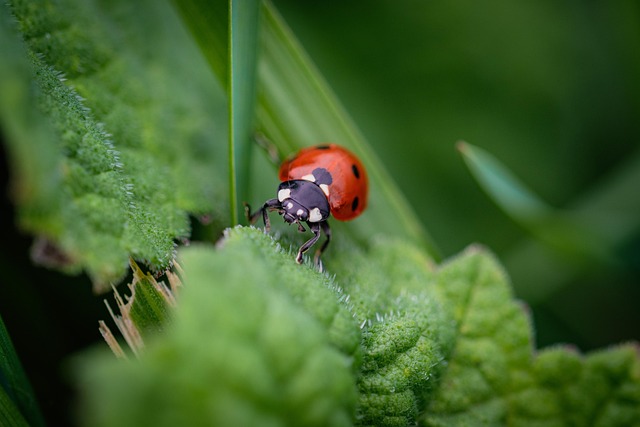Boxelder bugs, prevalent in warmer climates, are managed through understanding their four-stage life cycle: egg-laying, nymph emergence and feeding, molting to adults, and mating/hibernation. Eco-friendly pest control methods, focusing on prevention (sealing entry points, vegetation maintenance), early detection, and natural repellents, offer safer alternatives to traditional insecticides. This guide provides insights into boxelder bug behaviors and life cycles, enabling homeowners to develop tailored prevention plans for year-round protection against these persistent pests using both non-chemical and chemical solutions.
Tired of battling boxelder bugs? Discover eco-friendly methods to manage these pesky insects naturally. This comprehensive guide explores traditional vs. sustainable pest control options, delving into safe and effective natural solutions. Learn prevention strategies to minimize infestations and understand the boxelder bug’s life cycle. Say goodbye to harmful chemicals and embrace a greener approach to pest control for boxelder bugs.
Understanding Boxelder Bugs and Their Life Cycle
Boxelder bugs are a common household pest, particularly in regions with warm climates. Understanding their life cycle is key to effective eco-friendly pest control. These insects go through four stages: egg, nymph, and adult. In the egg stage, females lay clusters of eggs on tree bark or under eaves of buildings during late summer and fall. The tiny nymphs hatch and begin feeding on plant sap, growing and molting several times before reaching adulthood in about a month.
Adult boxelder bugs are most active in search of mates and suitable winter havens. They prefer dark, secluded places like cracks in walls, attics, and tree hollows. In the spring, females lay eggs, starting another generation. By knowing this life cycle, homeowners can implement targeted eco-friendly measures such as sealing entry points, maintaining proper vegetation trim, and using natural repellents to effectively manage boxelder bug infestations without harmful chemicals.
Traditional vs Eco-Friendly Pest Control Methods
In the battle against boxelder bugs, there’s a growing trend towards eco-friendly pest control methods that offer both safety and effectiveness. Unlike traditional approaches, these modern techniques prioritize natural solutions and minimize the use of synthetic chemicals. Traditional pest control for boxelder bugs often relies on insecticides, which can be harmful to beneficial insects, wildlife, and even human health. They may also contaminate soil and water sources, leading to long-term environmental damage.
Eco-friendly alternatives focus on prevention, early detection, and biological controls. This includes practices like sealing entry points to prevent bugs from entering homes, maintaining healthy plants to deter natural predators, and introducing beneficial insects that feed on boxelder bugs. By embracing these methods, individuals can contribute to a more sustainable and balanced ecosystem while effectively managing boxelder bug infestations.
Safe and Effective Natural Solutions for Management
Prevention Strategies to Reduce Infestations
In light of the above, it’s clear that managing boxelder bugs requires a balanced approach. While traditional pest control methods exist, eco-friendly solutions offer a safer and more sustainable route. By understanding the bug’s life cycle and implementing natural prevention strategies, we can effectively reduce infestations without harming our environment. When considering pest control for boxelder bugs, choosing green methods ensures a healthier ecosystem and a brighter future.
